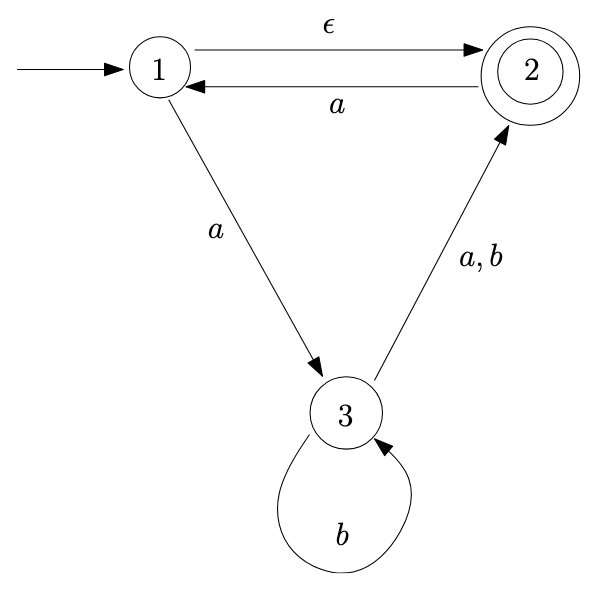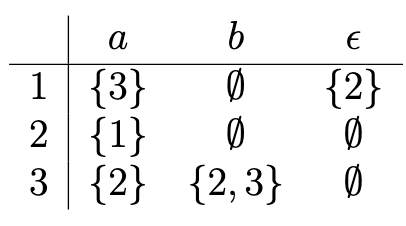

We’ve seen that the regular languages are those that have an accepting DFA.
Question: Are NFAs more powerful? In other words, are there languages that NFAs can accept that DFAs can’t?
If NFAs are no more powerful than DFAs, then things get a lot easier: for example, the following language from the Exercises is simply the union of two languages: \[ L = \{w : w \text{ contains an odd number of $a$'s or exactly two $b$'s}\} \]
and the approach that works to build an NFA from this (that is, joining each language’s DFA with an \(\epsilon\) transition from a shared start state) could work on any pair of languages!
It turns out that no, NFAs are not more powerful.
Theorem: For any NFA \(N\), there exists an equivalent DFA \(M\) such that \(L(M) = L(N)\).
Proof: Suppose \(N\) is an NFA \((Q, \Sigma, \delta, q, F)\). We show how to construct a DFA \(M = (Q', \Sigma', \delta', q', F')\) such that \(L(M) = L(N)\).
Here we will not give the formal proof in its full generality, but work through an example and convince ourselves that this approach works in general. The game plan here is to design a DFA that runs all possible computations that the NFA could run on the input. The process is somewhat similar to how we proved the union case for DFAs, except instead of each DFA state corresponding to pairs of original machine states, they will represent sets of states that the input machine might have been in.
Consider the following NFA; for convenience, I’ve also included its transition table:


Do Exercises - Part A
See the whiteboard notes, and also Section 2.5 of TC. Section 2.5 gives the general process, while Section 2.5.1 shows the conversion for this example.
Do Exercises - Part B
We’re finally ready to do the (actually quite straightforward, now!) proof of the closure of regular operations.
Theorem: The set of regular languages is closed under the regular operations.
Proof: